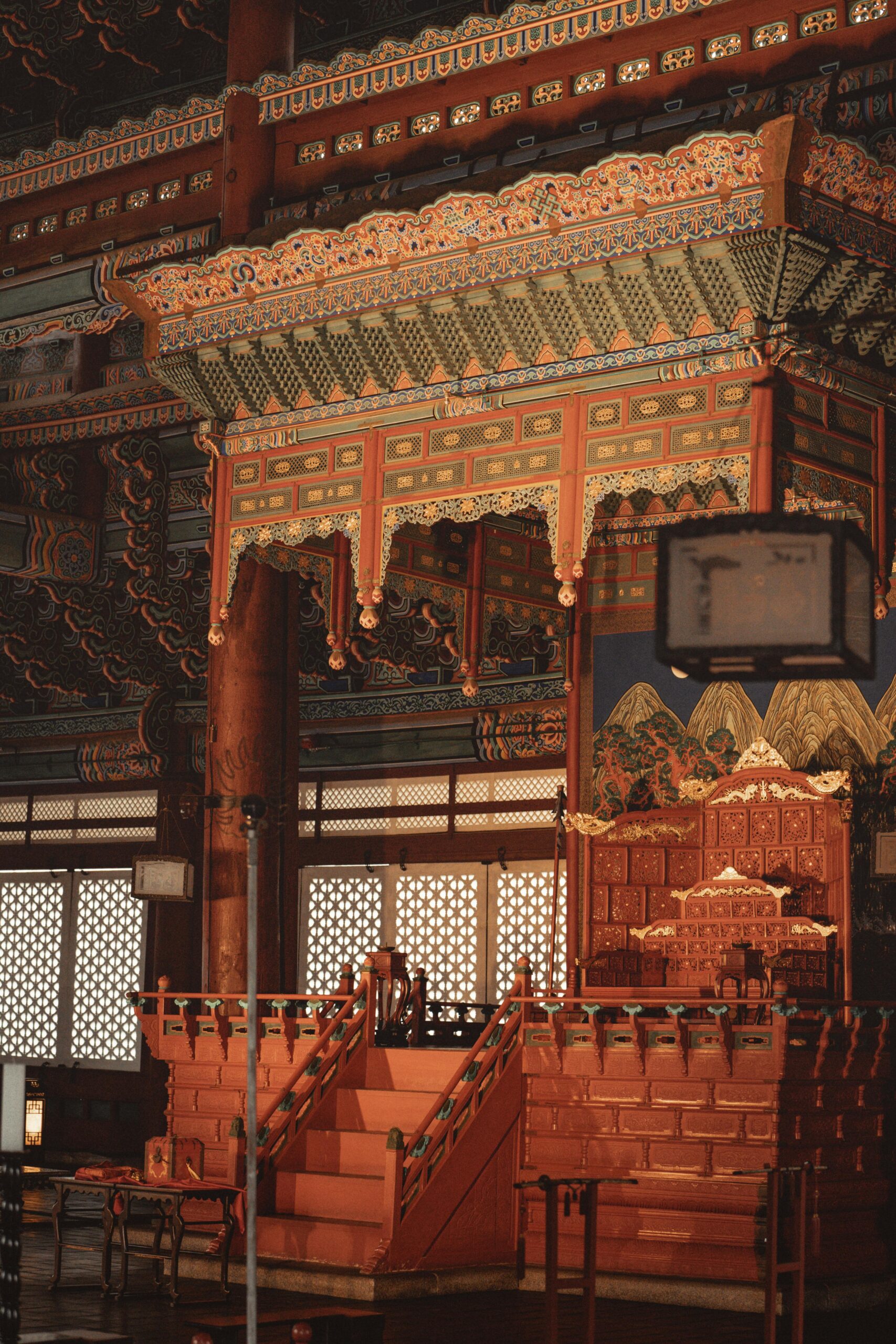Introduction
Gyeongbokgung Palace, often regarded as the heart of Korean history and culture, stands as a majestic symbol of the Joseon Dynasty’s grandeur. Located in the heart of Seoul, this palace represents the rich architectural heritage and political history of Korea’s longest-lasting dynasty. Originally constructed in 1395, Gyeongbokgung has witnessed centuries of upheaval, restoration, and transformation, reflecting the resilience and cultural pride of the Korean people. This article will explore the palace’s historical significance, its architectural marvels, the role it played throughout Korea’s turbulent past, and its ongoing status as a cultural landmark. By diving deep into these aspects, readers will gain a profound appreciation for Gyeongbokgung’s unique position in both Korea’s history and its modern identity.
The Historical Significance of Gyeongbokgung Palace
Gyeongbokgung Palace, meaning “Palace Greatly Blessed by Heaven,” was the main royal palace of the Joseon Dynasty, serving as the king’s residence and the seat of government. Its construction marked the establishment of Seoul as the capital and symbolized the consolidation of royal authority and Confucian ideals. Beyond being the physical center of governance, it was a cultural hub where scholars and officials gathered to discuss politics and philosophy. However, its history has been tumultuous; the palace was destroyed during the Japanese invasions in the late 16th century and later suffered damage during the Japanese colonial period in the early 20th century. Despite these challenges, its significance as a representation of Korea’s sovereignty and cultural identity remains steadfast.
Architectural Marvels and Symbolism
The architecture of Gyeongbokgung Palace is a masterpiece of traditional Korean design, harmonizing natural surroundings with human craftsmanship. The palace layout follows Confucian principles, emphasizing hierarchy and order through the arrangement of gates, halls, and courtyards. The grand throne hall, Geunjeongjeon, served as the king’s audience hall and is adorned with intricate wooden carvings, colorful dancheong paintings, and symbolic phoenix motifs. Surrounding buildings reflect functional diversity, from living quarters to government offices, each contributing uniquely to the palace’s vibrant ecosystem. The use of natural materials like timber, stone, and clay tiles reflects a deep respect for nature, while the spatial design fosters an atmosphere of solemnity and dignity appropriate for royal rule.
The Role of Gyeongbokgung During Korea’s Turbulent History
Throughout the Joseon era, Gyeongbokgung was at the core of political power, hosting ceremonies, governance, and royal rituals. However, the palace’s fate mirrored Korea’s own struggles. Destroyed during the Japanese invasions (1592–1598), it lay in ruins for over two centuries until restoration efforts in the 19th century under King Gojong. The palace was again jeopardized during Japan’s colonial rule in the early 1900s, when significant portions were dismantled or repurposed, symbolizing the erosion of Korean sovereignty. Modern restoration efforts, begun in the 1990s, represent a reclaiming of cultural pride and historical memory. These efforts have revived Gyeongbokgung not only as a tourist destination but as a living testament to Korea’s enduring spirit throughout adversity.
Gyeongbokgung Palace as a Cultural Landmark Today
Today, Gyeongbokgung Palace stands as one of South Korea’s most iconic cultural landmarks, attracting millions of visitors annually who come to witness Korea’s royal heritage first-hand. Beyond tourism, it is used for cultural festivals, traditional performances, and educational programs, connecting contemporary society with its historical roots. The palace grounds include the National Palace Museum and the National Folk Museum, which provide visitors with deeper insight into Korean history and culture. Moreover, many Koreans view Gyeongbokgung as a symbol of national pride and identity, where the past is preserved and celebrated amid the bustling modern cityscape of Seoul.
Preserving the Legacy: Challenges and Future Perspectives
Preservation of Gyeongbokgung is an ongoing challenge involving the balance between restoration, modernization, and tourism impact. Conservation experts work diligently to maintain the authenticity of the original structures while making the palace accessible and informative for visitors. The threat of urban development and environmental factors also pose risks to the site’s integrity. Looking ahead, there is a strong commitment from both government and cultural organizations to ensure that Gyeongbokgung remains a vibrant symbol of Korean heritage. Future plans involve enhanced interactive experiences using technology to deepen public engagement, ensuring that the palace’s legacy endures for generations to come.
Conclusion
Gyeongbokgung Palace is far more than just an architectural marvel; it is a profound symbol of Korea’s historical resilience, cultural richness, and national identity. From its origins as the epicenter of royal power in the Joseon Dynasty to its destruction and painstaking restoration, the palace reflects the narrative of Korea itself—a story of endurance and revival. Today, it stands proudly as a cultural beacon and educational resource, bridging the past and present for residents and visitors alike. As preservation efforts progress, Gyeongbokgung will continue to inspire awe and foster appreciation for Korea’s remarkable history, ensuring that its legacy remains alive in the hearts of many.
